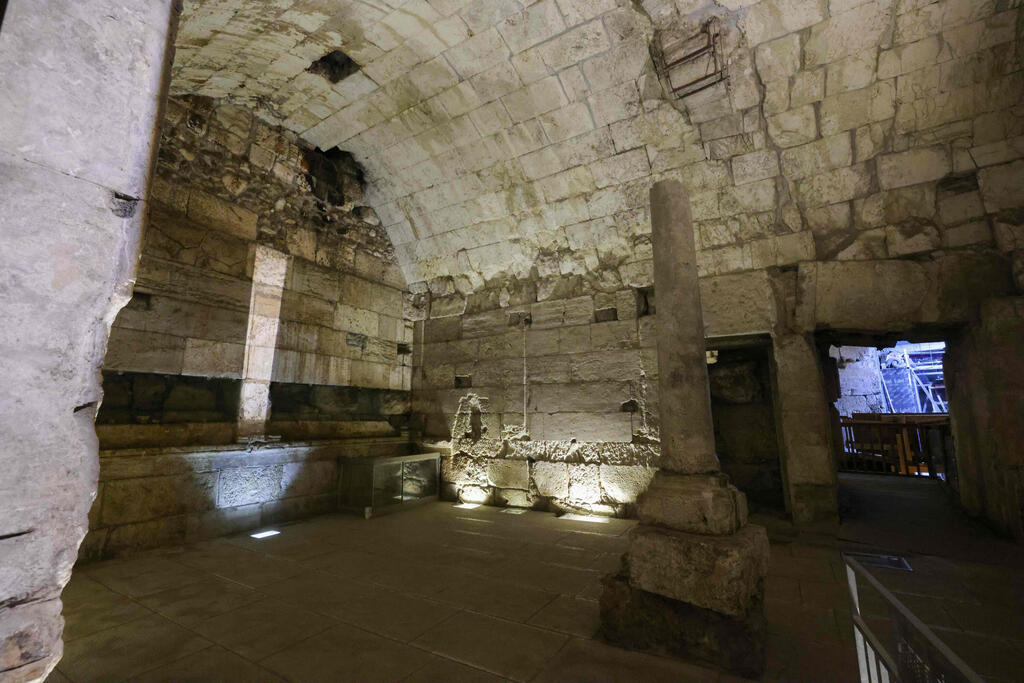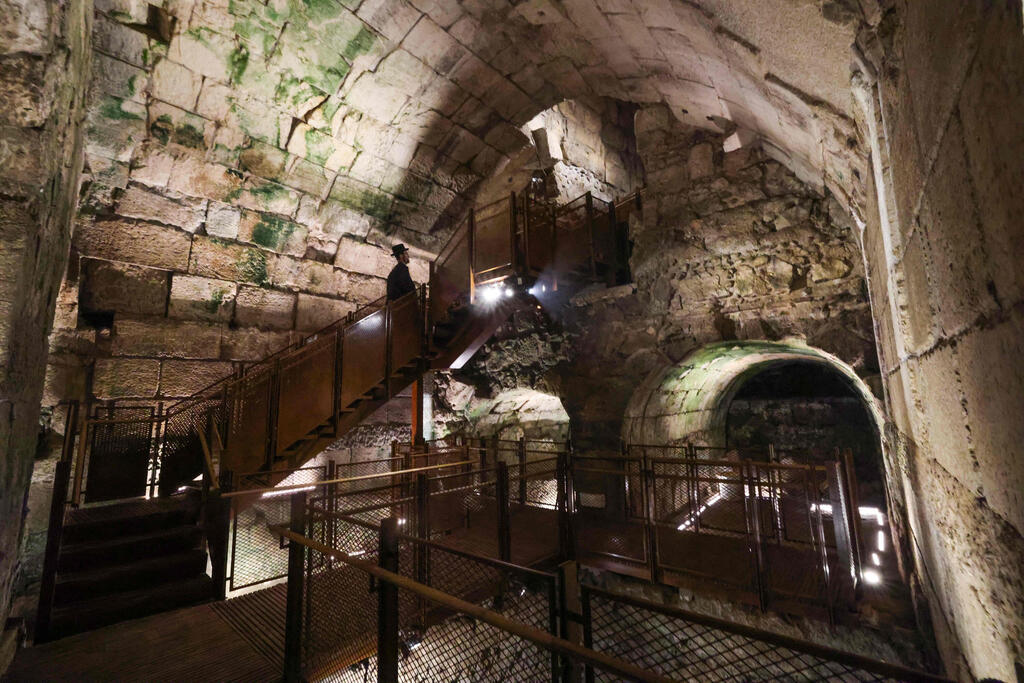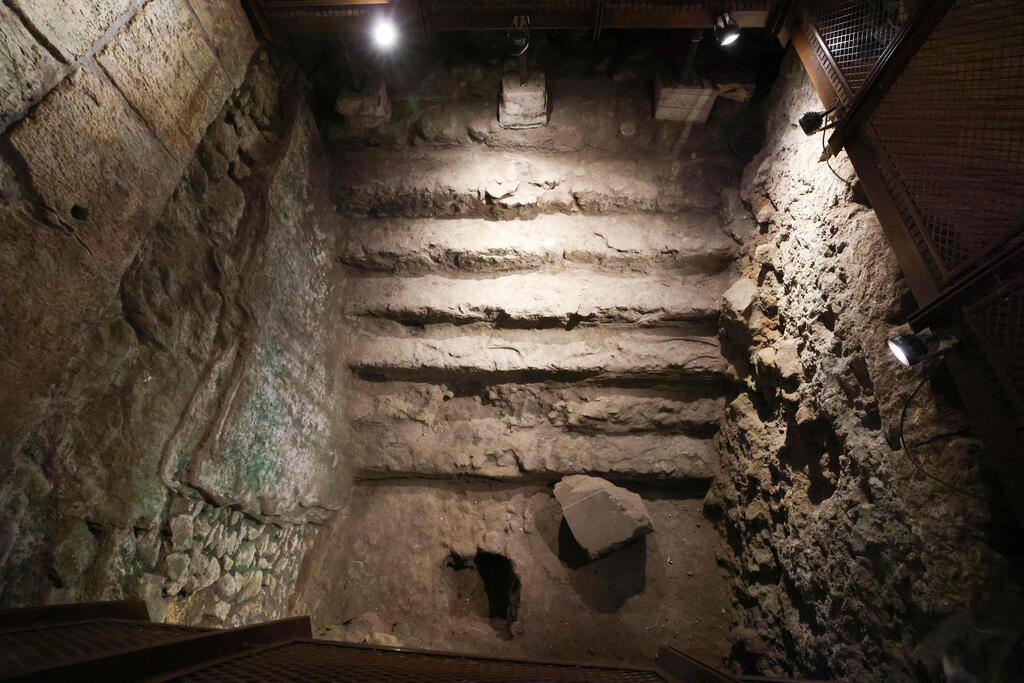Israeli archaeologists on Thursday unveiled new parts of a major public building in Jerusalem just meters from where the Second Jewish Temple is believed to have stood two millennia ago.
The opulent hall used by elites is the latest discovery to be made public by the Israeli Antiquities Authority (IAA) from the Western Wall Tunnels in the Old City and will be open for public tours.
3 View gallery


Parts of an opulent Second Temple period public building unveiled by the Israel Antiquities Authority in Jerusalem
(Photo: AFP)
Part of the structure was previously discovered and documented by Charles Warren in the nineteenth century, followed by various archaeologists in the twentieth century. The building contained two identical magnificent chambers with an elaborate fountain between them.
The walls of the halls and the fountain were decorated with sculpted cornice-bearing pilasters, flat supporting pillars, and topped with Corinthian capitals.
The decorative style of the building is typical of opulent Second Temple-period architecture.
The structure's halls were probably used for banquets or other gatherings by local elites or to host visiting dignitaries — a prized location given its proximity to the Temple Mount.
The Temple Mount is Judaism's holiest site but now houses the Haram al-Sharif compound, the third holiest site in Islam that includes the Al-Aqsa mosque and Dome of the Rock.
"It is a very magnificent building, one of the most magnificent public buildings that we know of from the Second Temple period," senior IAA archaeologist Shlomit Weksler-Bdolah told AFP.
3 View gallery


A visitor looks inside the Second Temple period public building in Jerusalem
(Photo: AFP)
The Second Jewish Temple was expanded upon under the reign of King Herod, a vassal of the Roman empire, and was destroyed by Roman forces in 70 AD.
Weksler-Bdolah said the more recently excavated parts of the hall shed light on how Jerusalem's rulers through history made certain to leave their mark, especially on prized terrain.
Around the time of the Temple's destruction, the banqueting hall was divided into different segments and there were "very, very impressive ritual baths" below the ground of the plaza, she said.
Weksler-Bdolah conceded that the different phases of construction at the site appeared "hectic" and that the exact chronology or motivations remain hard to understand.
But "you can really compare it with (modern) Jerusalem," she told AFP.
"Everyone who rules it has to put his flag, has to make a new plan, has to do something. If you don't do it, you don't exist."
She said the excavation showed that the hall was no longer in use by the time of the early Islamic period, which began in the 7th Century, as over the preceding centuries it had been packed with various types of fill.


